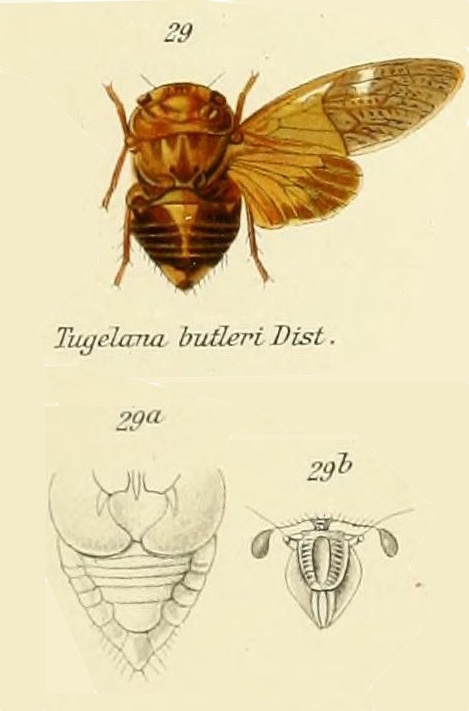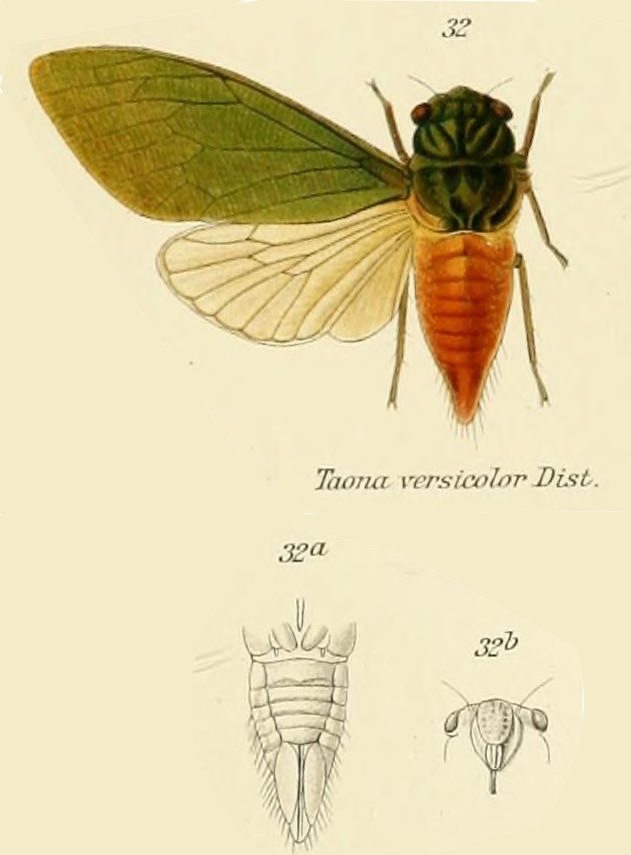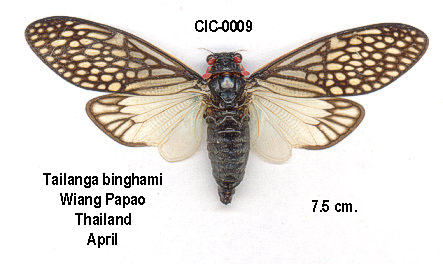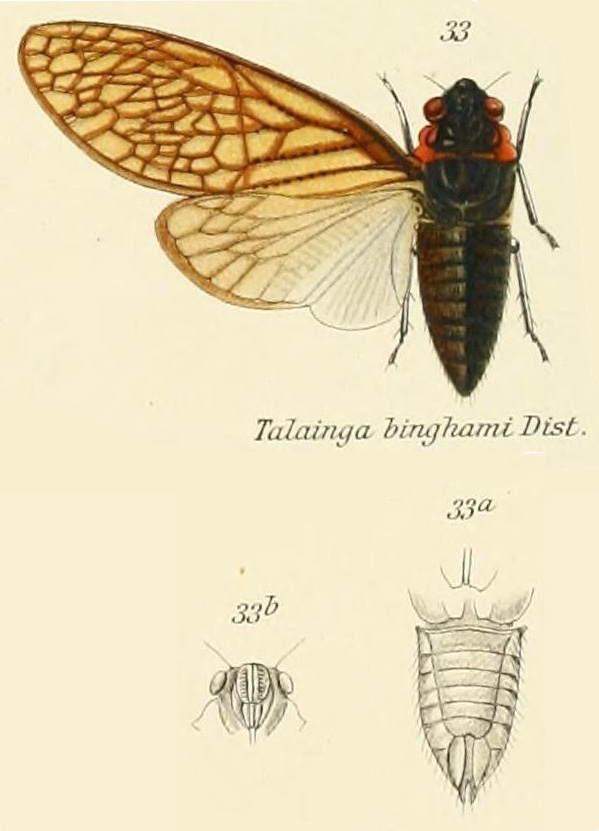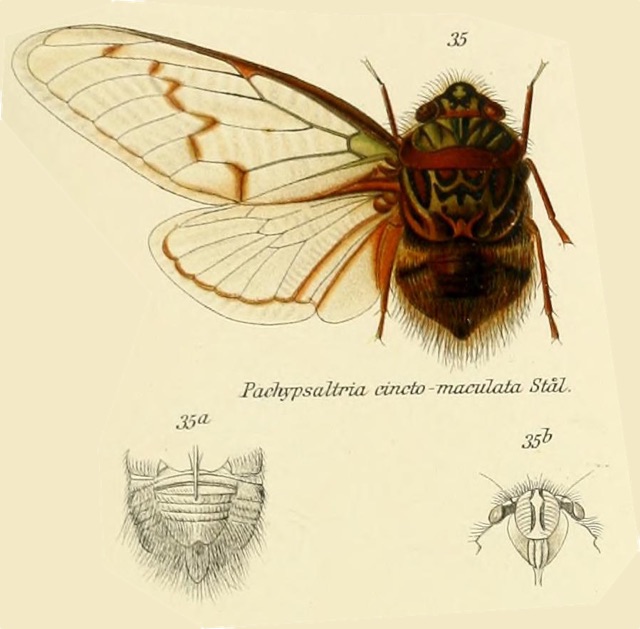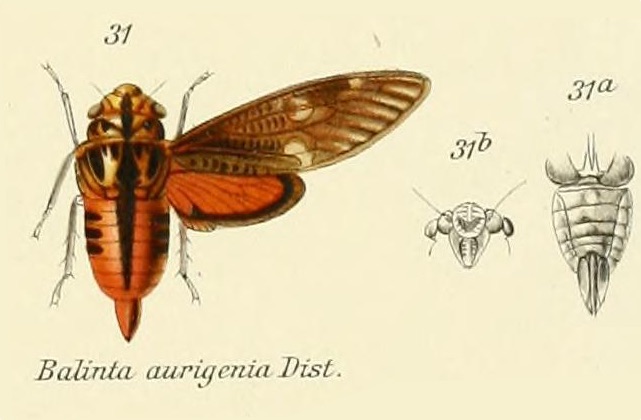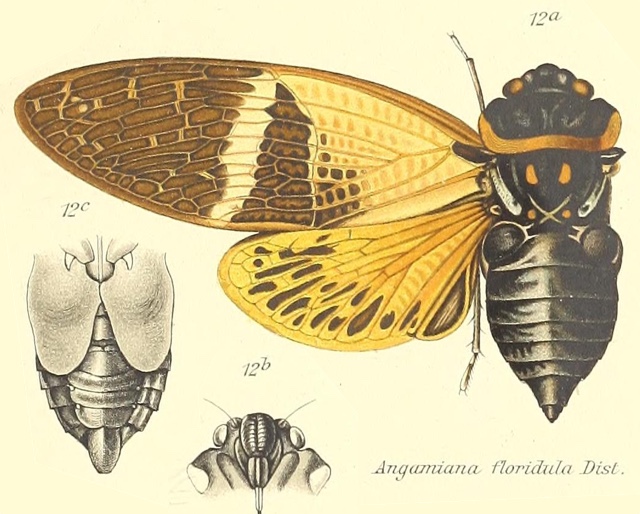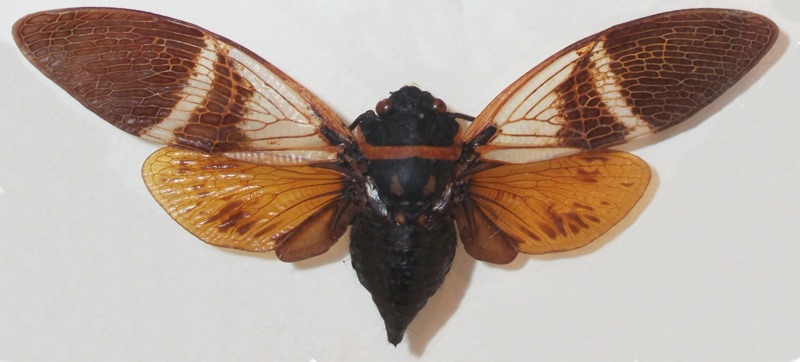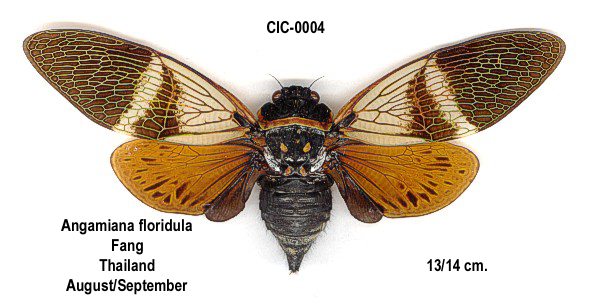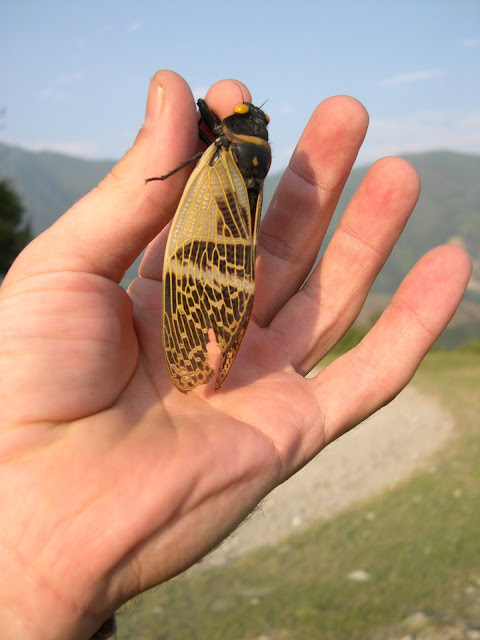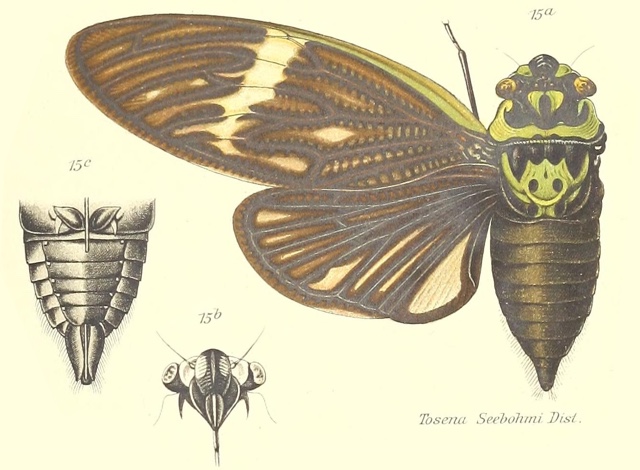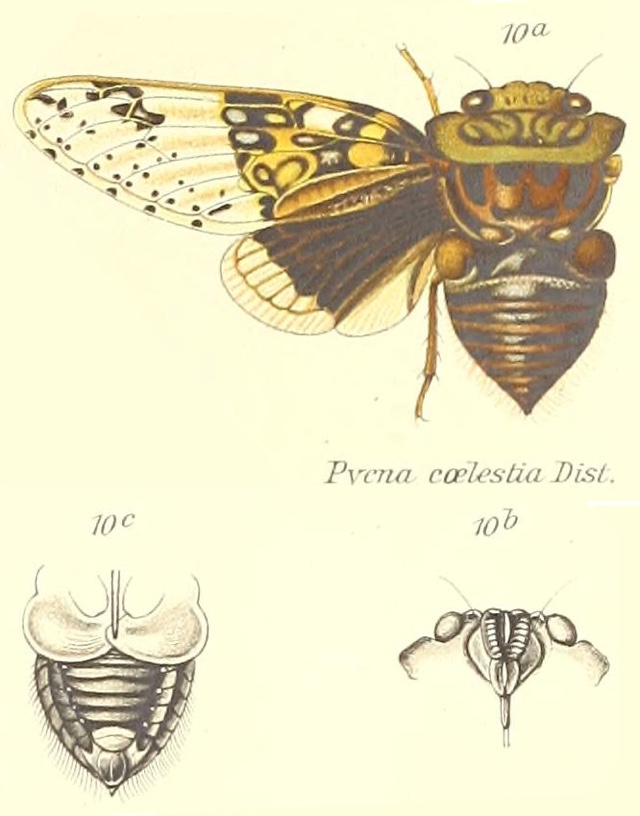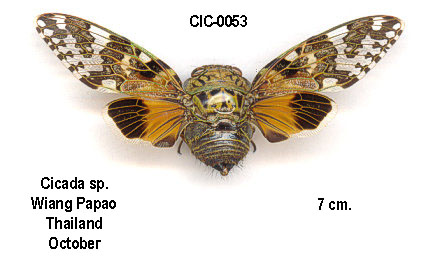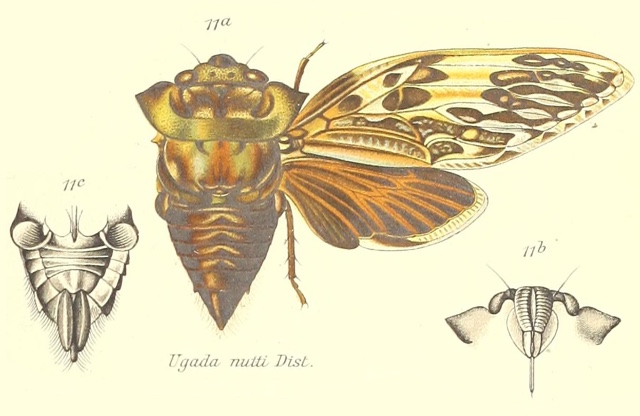Cyclochila australasiae (Donovan, 1805) is found in Australia and is remarkable for its variety of color morph, including green (Green Grocers), yellow (Yellow Mondays), blue (Blue Moons), and orange (Masked Devils).
Scientific classification:
Family: Cicadidae
Subfamily: Cicadinae
Tribe: Cyclochilini
Genus: Cyclochila
Species: Cyclochila australasiae (Donovan, 1805)
A Green Grocer: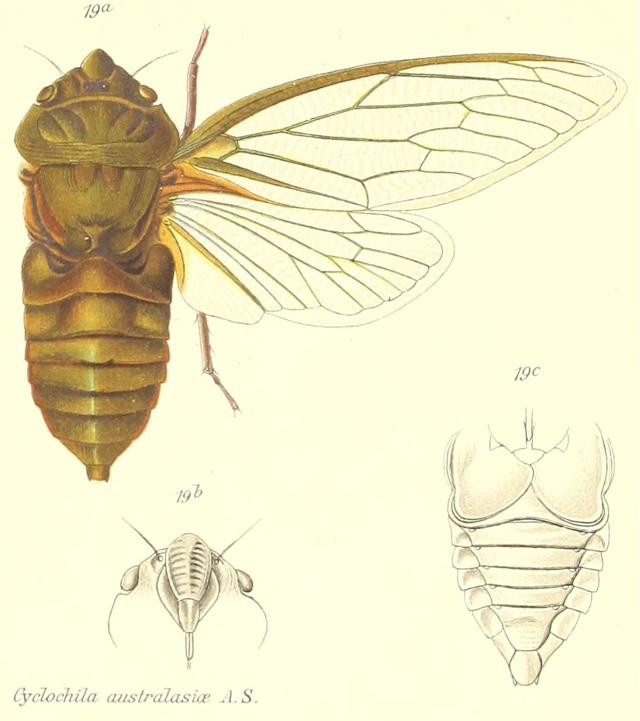
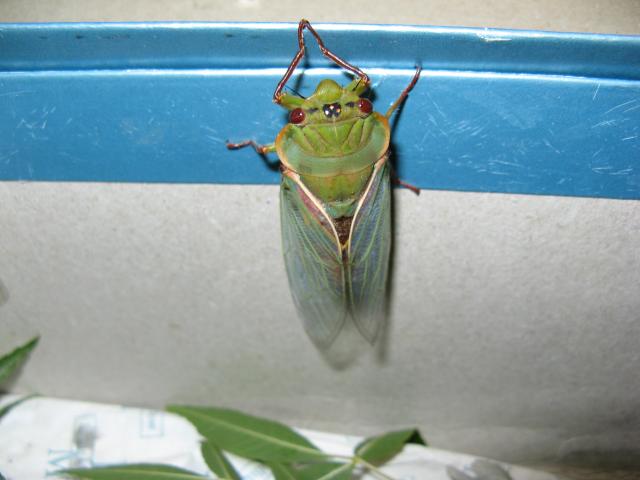
Green Grocer Photo by Kevin Lee.
A Green Grocer Specimen:
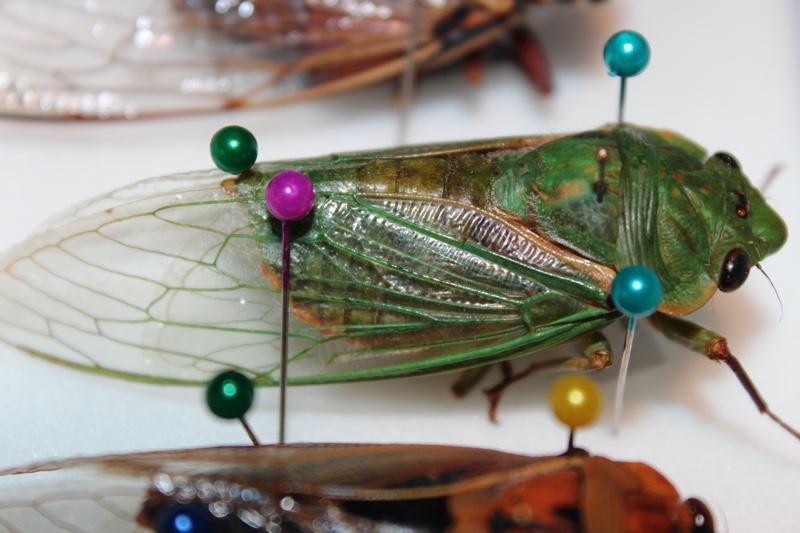
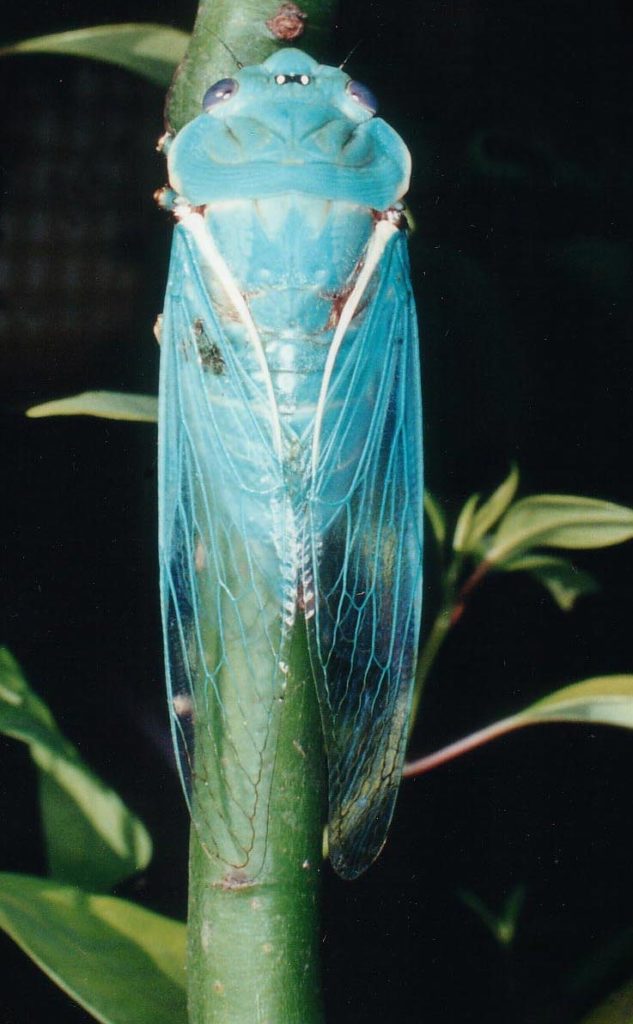
Rare Blue Moon variety. Photo by David Emery.
Cyclochila genus description by W. L. Distant:
Characters. — Head about long as breadth between eyes, including eyes distinctly narrower than pronotum but almost as wide as its anterior margin, ocelli close together near middle of vertex, very much more remote from eyes than from each other; face longer than broad, moderately globose; pronotum about as long as mesonotum including the cruciform elevation, its lateral. margins moderately convexly ampliated ; abdomen about as long as space between apex of head and base of cruciform elevation, beneath moderately convex ; opercula short, not passing base of abdomen ; tegmina about or nearly three times longer than broad, basal cell scarcely longer than broad, apical areas eight; wings more than half the length of tegmina, apical areas six.
References:
- The illustration and genus description comes from the journal Genera Insectorum, and a specific article from 1913 by W. L. Distant titled Homoptera. Fam. Cicadidae, Subfam, Cicadinae. Read it on the Biodiversity Heritage Library website.
- Current species name verified using Allen Sanborn’s Catalogue of the Cicadoidea (Hemiptera: Auchenorrhyncha).
